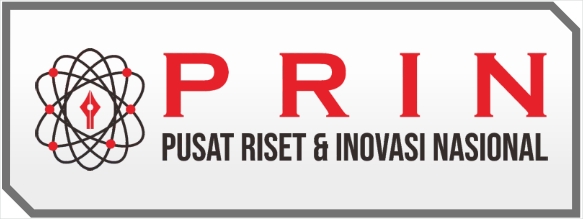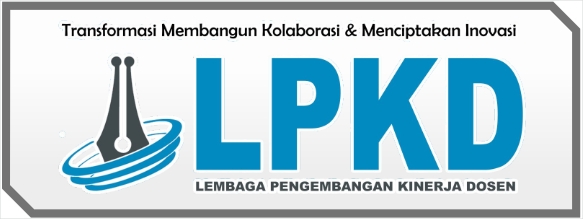Hubungan Status Gizi, Panjang Badan Lahir Dan Pemberian Asi Eksklusif Dengan Kejadian Stunting Pada Anak Usia 24-59 Bulan Di Kecamatan Medan Belawan
DOI:
https://doi.org/10.55606/jurrike.v2i2.1927Keywords:
Stunting, Nutritional Status, Birth Body Length, Exclusive Breastfeeding, Children 24-59 Month of AgeAbstract
Introduction: The incidence of stunting in North Sumatra Province reached 25.8% and is the 17th province with the incidence of stunting in Indonesia. Stunting in Medan City is spread across 63 urban villages and 20 sub-districts with the area that has the highest stunting rate is Medan Belawan Sub-district. Purpose: This research was conducted to assess the relationship between nutritional status, birth length and exclusive breastfeeding with the incidence of stunting in children aged 24-59 months in Medan Belawan District in 2023. Method: This research uses an observational study research design with a cross sectional design approach. carried out in the work area of the Medan Belawan District Health Center. The sample was children aged 24-59 months who were recorded at the Medan Belawan District Health Center in 2023 who met the inclusion and exclusion criteria during the research period with a total sample of 44 people. Results: A total of 5 children (29.4%) with good nutrition experienced stunting, 11 children (68.8%) with poor nutrition experienced stunting and 11 children (100.0%) with poor nutrition experienced stunting with a p-value of 0.001. A total of 4 children (33.3%) with normal birth length experienced stunting and 22 children (59.4%) with short birth length experienced stunting with a p-value of 0.002. As many as 10 children (45.5%) who received exclusive breast milk experienced stunting and as many as 17 children (77.3%) who did not receive exclusive breast milk experienced stunting with a p-value of 0.030, which means p-value < 0.005. Conclusion: There is a significant relationship between nutritional status, birth length and exclusive breastfeeding with the incidence of stunting in children aged 24-59 months in Medan Belawan District in 2023.
References
Akombi BJ, Agho KE, Hall JJ, Merom D, Astell-Burt T, Renzaho AMN. Stunting and severe stunting among children under-5 years in Nigeria: A multilevel analysis. BMC Pediatrics. 2017;17(1). doi:10.1186/s12887-016-0770-z
Kemenkes Republik Indonesia. Situasi Balita Pendek (Stunting) Di Indonesia.;2018.
Mugianti S, Mulyadi A, Anam AK, Najah ZL. Faktor Penyebab Anak Stunting Usia 25-60 Bulan di
Kecamatan Sukorejo Kota Blitar. Jurnal Ners dan Kebidanan (Journal of Ners and Midwifery). 2018;5(3):268-278. doi:10.26699/jnk.v5i3.art.p268-278
Azriful, dkk.(2018). Determinan Kejadian Stunting pada Balita Usia 24-59 Bulan di Kelurahan Ranggas Kecamatan Banggae Kabupaten Majene. Public Health Science Journal, 10,2.
Salsabila SG, Damailia R, Putri M. Hubungan Kejadian Stunting dengan Pengetahuan Ibu tentang Gizi di Kecamatan Cikulur Lebak Banten Tahun 2020. Jurnal Integrasi Kesehatan & Sains. 2021;3(1):100-103. doi:10.29313/jiks.v3i1.7336
Khulafa’ur Rosidah L, Harsiwi S, Dharma AK, Kediri H, Timur J. hubungan status gizi dengan perkembangan balita usia 1-3 tahun (Di Posyandu Jaan Desa Jaan Kecamatan Gondang Kabupaten Nganjuk). Vol 6.; 2017.
Kemenkes Republik Indonesia. angka kecukupan gizi.;2019. www.peraturan.go.id.
Riang Toby Y, Dewi Anggraeni L, Rasmada S. Analisis Asupan Zat Gizi Terhadap Status Gizi Balita. Faletehan Health Journal. 2021;8(2):92-101.www.journal.lppmstikesfa.ac.id/ojs/index.php/FHJ
Peraturan Menteri Kesehatan Republik Indonesia. Standart Antropometri.; 2020.
Kustanto A. the prevalence of stunting, poverty, and economic growth in indonesia: a panel data dynamic causality analysis. Journal of Developing Economies. 2021;6(2):150. doi:10.20473/jde.v6i2.22358
Fitri L. Hubungan Bblr Dan Asi Ekslusif Dengan Kejadian Stunting Di Puskesmas Lima Puluh Pekanbaru. Jurnal Endurance. 2018;3(1):131. doi:10.22216/jen.v3i1.1767.
Mugianti S, Mulyadi A, Anam AK, Najah ZL. Faktor Penyebab Anak Stunting Usia 25-60 Bulan di Kecamatan Sukorejo Kota Blitar. Jurnal Ners dan Kebidanan (Journal of Ners and Midwifery). 2018;5(3):268-278. doi:10.26699/jnk.v5i3.art.p268-278
WHO. Concurrent Problems and Short-Term Consequences Long-Term Consequences Child Consequences.; 2017.
Nindyna Puspasari, Merryana Andriani. Hubungan Pengetahuan Ibu tentang Gizi dan Asupan Makan Balita dengan Status Gizi Balita (BB/U) Usia 12-24 Bulan. Amerta Nutrition. 2017;1(4):369-378. doi:10.20473/amnt.v1.i4.2017.369-378
Yuningsih, Y. (2020). Hubungan Status Gizi dengan Stunting pada Balita. Oksitosin :Jurnal Ilmiah Kebidanan, 9(2), 102–109. https://doi.org/10.35316/oksitosin.v9i2.1845
Andini, V. ., Maryanto, S. ., & Mulyasari, I. . (2020). Hubungan panjang badan lahir, berat badan lahir dan pemberian asi eksklusif terhadap kejadian stunting pada baduta usia 7-24 bulan di desa Wonorejo kecamatan Pringapus Kabupaten Semarang. Jurnal Gizi DanKesehatan. https://doi.org/10.35473/jgk.v12i27.60
Downloads
Published
How to Cite
Issue
Section
License
Copyright (c) 2023 Khoirunnisa M.J. Harahap, Mila Trisna Sari

This work is licensed under a Creative Commons Attribution-ShareAlike 4.0 International License.
















